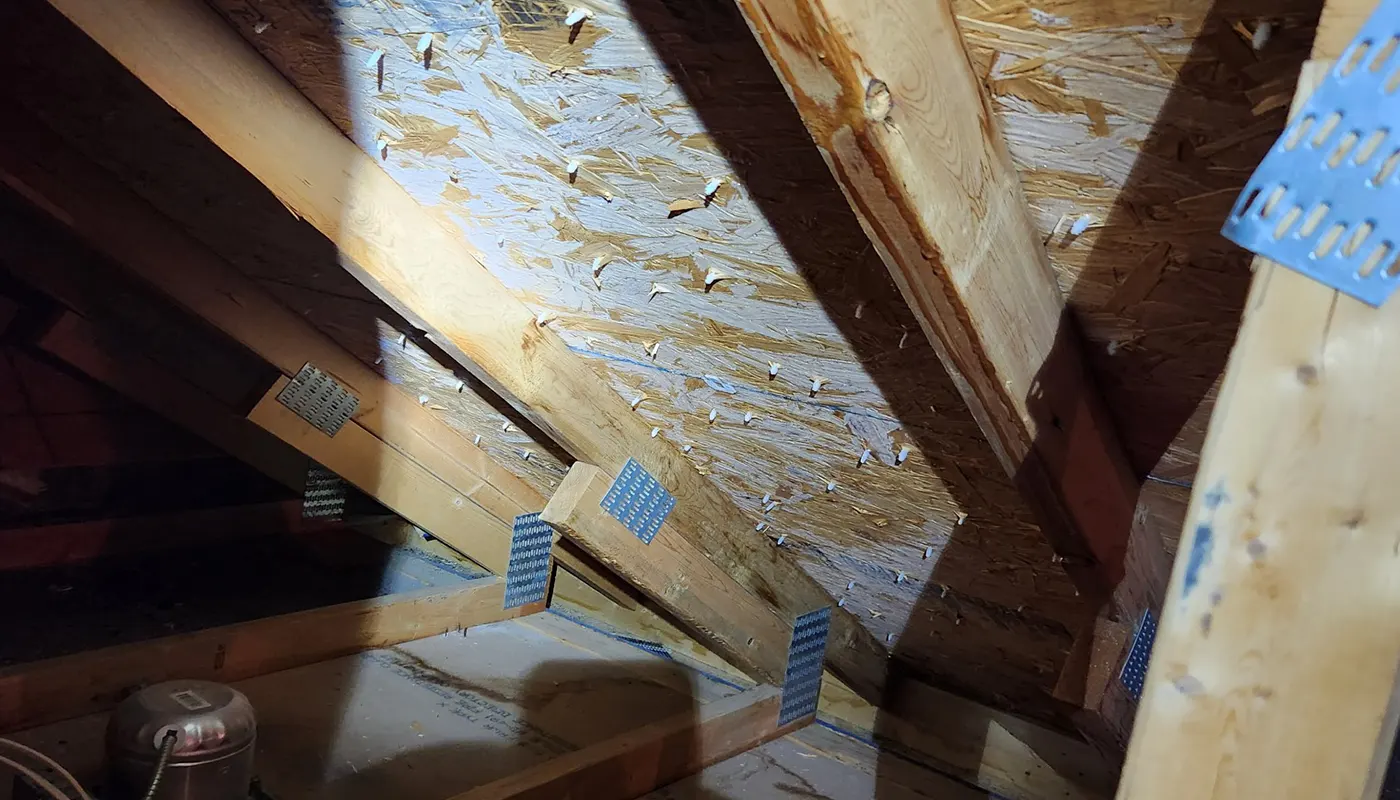
Why Frost Accumulates in Your Attic
If you’ve noticed frost building up in your attic, don’t panic—there’s a logical explanation: heat loss. When warm, moist air from your home escapes into the attic, it condenses on the cold surfaces of the roof deck and other components. In freezing temperatures, this condensation turns to frost.
Your attic should remain cool in winter, matching the outdoor temperature to protect building materials and prevent issues like ice dams and leaks. When warm air escapes, it disrupts this balance, creating frost on nails, roof decking, and sidewalls. If you’re experiencing this issue, consulting roofing contractors at Lee’s Summit, MO, can help identify the root causes and prevent further damage.
Why Does Heat Loss Happen?
Heat loss occurs when warm air escapes through open bypasses, which arehidden air leaks that connect your living space to the attic. Common bypasses include:
- Chimneys
- Ceiling light fixtures
- Exhaust fans
- Plumbing and electrical penetrations
- Heating ducts
These bypasses allow warm, moist air to move upward, leading to condensation and frost buildup. Local roofing companies in Lee’s Summit, MO, are experienced in addressing these problems and can recommend proper solutions so you don’t have to juggle DIY solutions.
Why Frost in the Attic is a Problem
While frost itself isn’t harmful, problems arise when it melts. The resulting moisture can cause:
- Wet Insulation – Damp insulation loses its effectiveness, allowing more heat to escape and worsening the issue.
- Roof Deck Damage – Prolonged exposure to moisture can cause the roof deck to delaminate and weaken.
- Mold Growth – Moisture creates the perfect environment for mold, which can damage materials and pose health risks.
- Water Stains – Condensation can lead to unsightly water stains on walls and ceilings, often mistaken for roof leaks.
If you suspect roof-related issues caused by attic moisture, consider contacting a roof repair service at Lee’s Summit, MO, to prevent costly damage.

How to Fix Frost in the Attic
To solve the problem, you must address the root cause: seal all air leaks. This involves:
- Sealing bypasses with high-performance closed-cell insulation.
- Insulating and properly venting bathroom and kitchen exhaust fans.
- Ensuring all connections like plumbing stacks, recessed lighting, and framing gaps are airtight,.
Other Steps to Consider
- Reduce Indoor Humidity
- Use bathroom fans with timers (run for at least an hour after showers).
- Turn off humidifiers.
- Use kitchen exhaust fans while cooking.
- Consider installing a Heat Recovery Ventilator (HRV) to exchange moist indoor air with dry outdoor air.
- Check House Pressure
Unbalanced HVAC ductwork can worsen air leaks. Ensure your system is functioning properly to maintain stable indoor pressure.
Why Insulation Alone Won’t Fix the Problem
Adding insulation without addressing air leaks will only trap moisture, leading to more condensation and damage. Proper air sealing and ventilation are essential to solving the issue.
Benefits of Fixing Heat Loss
By addressing heat loss, you’ll enjoy:
- Lower energy bills
- Reduced risk of ice dams and leaks
- No mold or condensation
- Preservation of building materials
- A more energy-efficient home
Don’t just cover up the symptoms—address the root cause to protect your home and enjoy peace of mind. Contact Good Roofing today to have experienced roofing contractors at Lee’s Summit, MO, on your side. We offer thorough attic inspection to ensure the job is done right!









